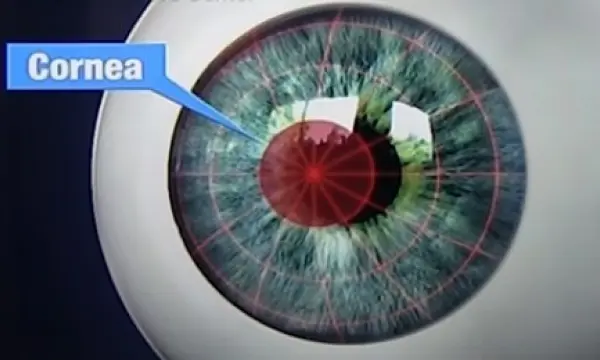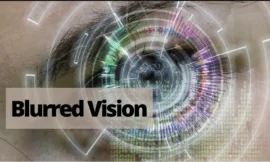Although LASIK is a known and effective eye-treating surgical procedure to dress refractive errors, the love and consciousness towards the body’s most critical organ (eye health) bring you here to learn about the best LASIK alternatives to make the best-acquainted choice. The allergenic ciliary body, optic nerve condition, prioritizing long-term vision sustainability, and cost-effectiveness would trigger eye patients to check out the alternatives.
The best alternative for LASIK would be different for every individual because it depends on several factors, such as corneal health, the patient’s age, hormonal changes, and the condition of the posterior chamber (site in between the iris and the natural lens). Here are the best surgical and non-surgical LASIK alternatives;
Surgical LASIK Alternatives:
- Photorefractive Keratectomy (PRK)
- Refractive Lens Exchange (RLE)
- Implantable Collamer Lens (ICL)
- Intraocular Lens Implant (IOL)
- Phakic Intraocular Lens Implants (PIOL)
- Small Incision Lenticule Extraction (SMILE)
- Laser-assisted Subepithelial Keratectomy (LASEK)
- Epipolis Laser In Situ Keratomileusis (EPI-LASEK)
Non–Surgical LASIK Alternatives:
- orthokeratology

Let’s look at each in detail and explore how these optical procedures are.
1. LASIK alternative: Photorefractive Keratectomy (PRK)
The best alternative to LASIK for getting a clear vision for an optic patient would be PRK; P stands for a photo that describes the laser, R expresses the refractive, and K stands for keratectomy. The whole term depicts treating refractive error via laser by removing the cornea’s outer layer, termed the epithelial wall. After this, the refractive error must be removed by reshaping the cornea.
PRK Procedure:
- A patient will be given numbing drops to avoid pain during the optical surgery.
- The patient would have to lie on surgery beds and be directed toward the laser source.
- Ophthalmologists will use excimer lasers to remove the epithelial layer and then alter the cornea’s structure to correct the refractive error.
- Contact lenses of your eye size would cover the cornea after the surgery.
- The medications would be given during or after the procedure to avoid post-surgery conditions.
PRK would be the LASIK alternative for vision correction if a patient has an infectious or thin cornea, glaucoma, or disturbed optic nerves and where the LASIK eligibility criteria are not fulfilled.
It would be recommended for the sportsperson or the person who has done critical professional work in his field because a special scleral contact lens is used to cover the eye after the surgery, unlike LASIK. These lenses protect the cornea from environmental dust and provide faster healing. They allow the eyes to get oxygen from outside and the tears to pass out in any medical or emotional case. The epithelial wall would be removed, and the image formed on the retina would be clear in most cases.
Pros and Cons of PRK
| Pros | Cons |
| Best for those who have thin cornea. | Dry eyes in some cases. |
| Sportspersons and professionals with heavy duties like army people will get the best results from this. | During surgery, overcorrection will lead to weakened eyesight. |
| Lens will not interpret the tearing system. | Infection of the eyes if not sterilized. |
Candidature requirement:
The candidature requirement would be the same as of LASIK except the one that is
- Thin cornea.
Patients who have not had any preceded diseases like glaucoma or pregnancy, are over 18 years old and don’t have diabetes or other systematic severe complications would be the ideal candidates for PRK.
2. LASIK alternative: Refractive Lens Exchange (RLE)
A senior ophthalmologist can’t put all his eggs in one basket to resolve the patient’s vision problems; he would diversify his ability and treat the patients according to the conditions. It could be the alternative if we can treat myopia (inability to see farther away objects clearly), farsightedness (failure to identify near objects), and astigmatism (blurry vision) with it.
Procedure:
- In RLE, a femtosecond laser replaces the natural lens behind the iris with the biocompatible intraocular lens.
- This intraocular lens could be Mono focal, multifocal, monovision, or other. A particular IOL lens could be used based on the patient’s needs.
- The new biocompatible IOLs will focus the light on the retina in the right direction and help the person see unclouded things.
The speciality of RLE:
It has a higher success rate than any other; it can treat the condition of presbyopia (unable to focus on any object).
Pros and Cons of RLE
| Pros | Cons |
| Best for astigmatism | It can’t treat myopia and hyperopia. |
| Multiple types of lenses can treat a diversity of eye problems. | Red eyes problem just after the surgery. |
| Exceptionally higher success rate. | Need glasses at night for clear vision. |
3. LASIK Alternative: Intraocular Lens (IOL) Implants
Multiple LASIK alternatives are available, and the patient’s unique optical conditions require a customized treatment plan to get better vision. Various types of IOLs are available, and every intraocular lens has unique properties to aid the person in seeing the world without blurriness.
Procedure:
When discussing the best LASIK alternative, ophthalmologists can’t deny the importance of IOLs because they are the procedure that can help eye patients with their presbyopia and cataract conditions.
After removing the natural lens from the cornea, doctors will place the IOLs with haptics or arms (to help the lens get placed in the required position).
The fine lens edges avoid blurriness, haziness, and colour mixings. The optical zone of the IOLs will direct the light to the retina so that the brain gets signals to make clear, real, and inverted images.
Uniqueness of IOLs:
After 10-15 years, the patient may see things cloudy and can’t focus on things properly; in that case, he needs to get replaced by the new IOLs for better vision.
IOLs Pros and Cons
| Pros | Cons |
| Helps you in getting vision correction. | Need glasses occasionally to get clear vision. |
| Considered as good by financial means. | In darkness or at night, you may see things cloudy. |
| Biocompatible materials help you to stay comfortable after the surgery and are impermeable for the oxygen to pass in and the tears to come out. | Post-surgery may include inflammation or swelling of the eyes and enhanced cataract risk. |
4. LASIK Alternative: Implantable Collamer Lens (ICL)
If you want to see the beautiful world without holding glasses on your nose with a thin cornea, then this implantable Collamer lens would be the best alternative for LASIK, which gives the best results with a healthy cornea. The result you will get will surprise you with clear vision without wearing glasses. It has an average success rate of 89%.
Procedure:
In ICL, first, you will be given numbing drops in the eyes, and two small incisions must be made via the laser. These lenses have haptics or arms from which they would have to be fixed in the position.
The lens would be positioned just behind the iris. It would direct the light to the retina via the cornea. The retina will signal the brain, forming the image the eyes see. The UV protection filter would occupy the lens in specific cases to avoid complications.
Specialty:
These Implantable Collamer lenses are best designed to treat nearsightedness (myopia). Performs well in the case of a person with nearsightedness and astigmatism.
Pros and Cons of ICLs
| Pros | Cons |
| The top benefit will include a clear vision. | Light sensitivity problem. |
| ICL with a UV filter protects eyes from UV rays. | Hazy or cloudy vision during the night. |
| Lifetime durability without exceptional cases | Serious complications include retinal detachment. |
5. LASIK alternative: Small incision lenticule extraction
SMILE may be the best alternative, but I’m still determining. Let’s discuss its procedure. In small incision lenticule extraction, a disc of lenticule that is a few millimetres in size will have to be created. A laser will be used to create 2 incisions for removing the lenticule. After this, the patient will get better vision. It will be suitable for people who have thin cornea.
Pros and Cons of SMILE:
| Pros | Cons |
| Fast healing from the surgery. | Dry or rough-looking eyes. |
| The success rate is higher than 90%. | Gloomy or cloudy vision during the night. |
| It will make you free from eyewear. | Risks associated with this can lead to another surgery. |
6. LASIK alternative: Phakic Intraocular Lens Implants (PIOL)
There is no need to worry if you have nearsightedness with a higher diopter value and are not eligible for LASIK. The thin cornea can cause severe complications in some instances, so phakic intraocular lenses are the best (PIOL) solution for you.
As an alternative to LASIK, it offers better results without removing the natural lens. In the surgery, the ophthalmologist will place the Phakic lens in the ciliary body and front of the natural eye lens. After LASIK, it got ophthalmologists’ attention in the optical field because of its higher success rate.
Pros and Cons of PIOLs:
| Pros | Cons |
| Don’t need flap creation. | Damage endothelial cells. |
| Give you better vision with focus. | It can inhibit corneal rehabilitation power. |
| Non-invasive surgery. | Increase risk of cataracts after this surgery. |
7. LASIK Alternative: LASEK
Thin corneas and the ciliary body are why patients become ineligible for LASIK. But here we got LASEK (laser‐assisted subepithelial keratectomy), which solved the ophthalmologist’s problem of dealing with a thin cornea.
The primo alternative to LASIK, in which a superficial flap will have to be created by the eye surgeon, is to avoid damage to the epithelial cells and reshape the cornea tissue to fix the refractive error.
It is designed to prevent any discomfort from the stromal tissues during flap creation, but it has potential benefits and risks.
Pros and Cons of LASEK:
| Pros | Cons |
| Gives you the vision that you are expecting from LASIK | Dry eyes risk still retained. |
| Doesn’t alter the corneal power to heal. | Inflammation of the stromal tissue. |
| Minimize the blurriness or cloudy vision during the night. | Sever lamellar inflammation. |
8. LASIK Alternative: Epi-LASEK
Ophthalmologists find it challenging to deal with thin and irregular cornea patients. The epi-LASEK procedure is designed to overcome this issue and achieve a higher success rate. The term epi is for epithelial tissue, emphasizing the importance of epithelial tissues in improving vision.

9. Non-surgical alternative: orthokeratology
If you are looking for a non-surgical LASIK alternative, orthokeratology will be considered the prompt, effective procedure for improved vision. In orthokeratology, a specialized lens is used to fix the refractive error in your eyes. This procedure will not give you a clear vision for extended periods. It is risk-free as it doesn’t involve corneal flap creation, incision, or lenticular disc formation.
Which LASIK alternative surgery is good for you?
All the above LASIK alternative surgeries have benefits and risks, but what is right for you will depend on your eye’s medical report, which your ophthalmologist will examine. Recently, my friend got his PRK surgery, and now he is getting better as he follows his doctor’s prescription strictly. So, get a consultation from your doctor and get the best LASIK alternative that fulfils your needs for better vision.
References:
Li, X., et-al, (2023). Orthokeratology in controlling myopia of children: a meta-analysis of randomized controlled trials. BMC Ophthalmology, 23(1).
Hasan, S. (2023, August 25). Phakic intraocular lens myopia. StatPearls – NCBI Bookshelf.
Kuryan, J. et-al, (2017). Laser-assisted subepithelial keratectomy (LASEK) versus laser-assisted in-situ keratomileusis (LASIK) for correcting myopia. The Cochrane Library, 2017(2).
Professional, C. C. M. (n.d.). SMILE eye surgery. Cleveland Clinic.
Somani, S. N. (2023, July 18). Photorefractive keratectomy. StatPearls – NCBI Bookshelf.




